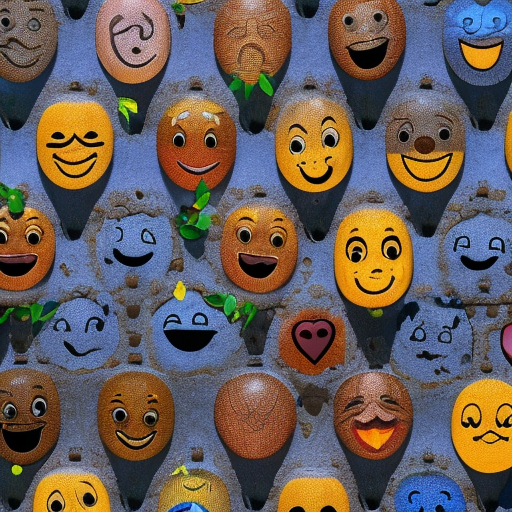Summary:
Emojis are small digital images or icons used to express emotions, ideas, or concepts in electronic communication. They have become an integral part of modern communication, allowing people to convey feelings and add context to their messages. Emojis originated in Japan in the late 1990s and have since gained worldwide popularity. They have evolved into a diverse and extensive collection of symbols, representing a wide range of emotions, objects, and actions. Emojis have not only revolutionized the way we communicate but have also become a significant cultural phenomenon.
Origins and Evolution:
Emojis were first created by Shigetaka Kurita, a Japanese artist, in 1999. Kurita was working for a mobile phone company and wanted to find a way to add emotional expression to text messages. He designed a set of 176 simple 12×12 pixel images, including smiley faces, hearts, and weather symbols. These early emojis were limited in number and functionality but laid the foundation for what would become a global phenomenon.
Over time, emojis gained popularity in Japan and spread to other countries as mobile messaging became more prevalent. In 2010, Apple introduced emojis to its iOS platform, making them accessible to a wider audience. Since then, emojis have become standardized across different platforms, allowing users to send and receive the same emojis regardless of the device or operating system they are using.
Function and Cultural Significance:
Emojis serve multiple functions in digital communication. They add emotional context to text-based messages, helping to convey tone and intent. They also provide a visual representation of objects, actions, and concepts, making it easier to communicate complex ideas in a concise and accessible way. Emojis have become a universal language, transcending linguistic barriers and allowing people from different cultures to understand each other better.
Furthermore, emojis have become a cultural phenomenon, influencing various aspects of popular culture. They have inspired art exhibitions, fashion trends, and even movies. In 2017, “The Emoji Movie” was released, featuring a world inside a smartphone where emojis live and interact. Emojis have also been used in advertising campaigns, with companies incorporating them into their marketing strategies to appeal to younger audiences.
Diversity and Inclusivity:
In recent years, there has been a push for more diverse and inclusive emojis. Initially, emojis primarily represented white individuals and limited gender options. However, efforts have been made to expand the range of skin tones, hair types, and gender options available. This has been seen as a step towards better representation and inclusivity in digital communication.
Controversies and Misinterpretations:
Despite their widespread use and popularity, emojis have also faced controversies and misinterpretations. Some argue that emojis can oversimplify complex emotions and hinder meaningful communication. Additionally, misinterpretations can occur when emojis are used across different cultures, as their meanings can vary. For example, a thumbs-up emoji may be seen as positive in some cultures but offensive in others.
The Future of Emojis:
As technology continues to advance, emojis are likely to evolve and become even more integrated into our daily lives. The Unicode Consortium, the organization responsible for standardizing emojis, regularly releases new emoji updates, introducing new symbols and concepts. Emojis are also becoming more animated and interactive, with features like Animoji and AR emojis allowing users to create personalized animated versions of themselves.
In conclusion, emojis have transformed the way we communicate in the digital age. They have evolved from a small set of simple icons to a diverse and extensive collection of symbols that represent emotions, objects, and actions. Emojis have become a cultural phenomenon, influencing popular culture and transcending linguistic barriers. While controversies and misinterpretations exist, emojis continue to play a significant role in modern communication and are likely to evolve further in the future.












